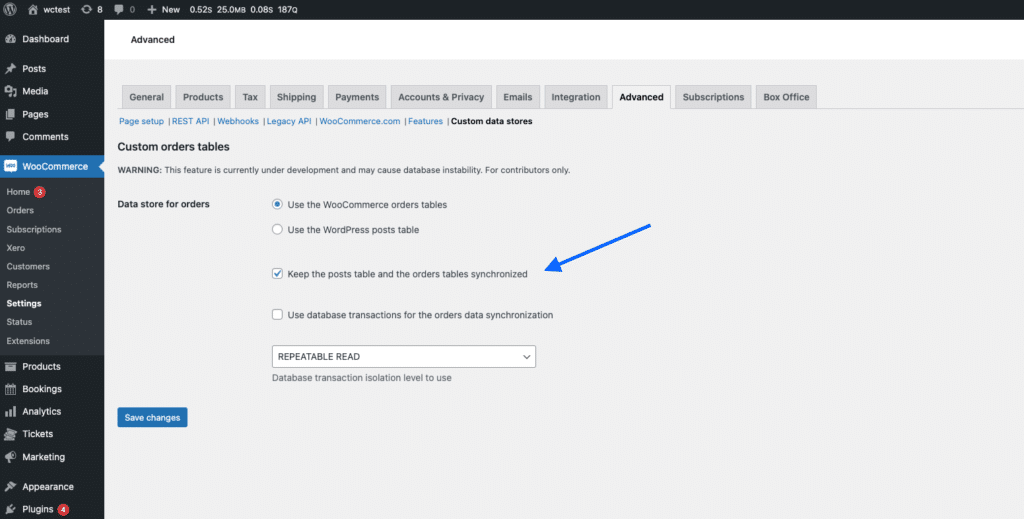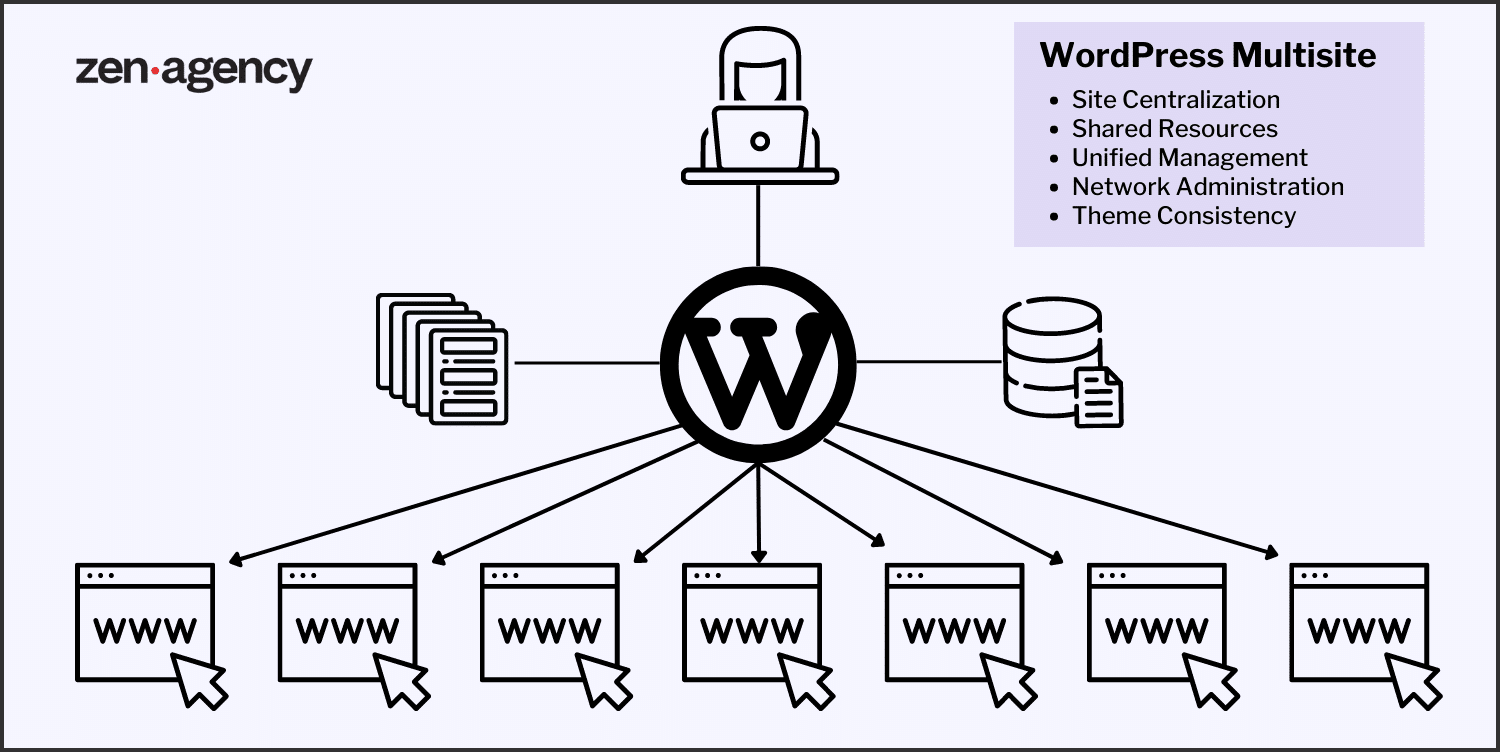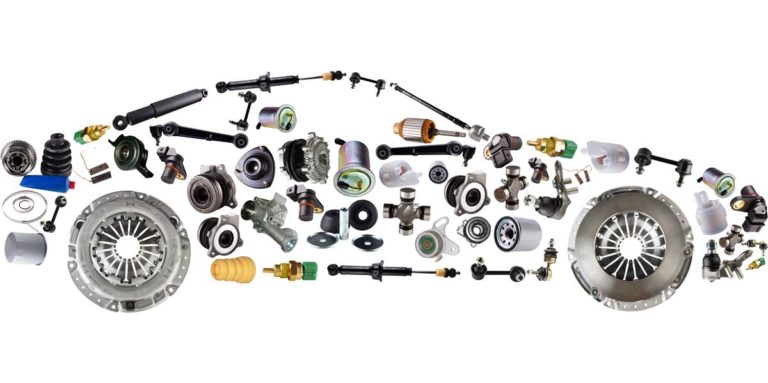WordPress Multisite Network: A Powerful Solution for Most Sites, But Is It Right for Your WooCommerce Store?
Introduction
Introduction to WordPress and WooCommerce
WordPress is a powerful content management system (CMS) that powers over 40% of the world’s websites. Known for its flexibility and ease of use, WordPress has become the go-to platform for businesses of all sizes. WooCommerce, a robust e-commerce plugin for WordPress, allows businesses to sell products and services online. With WooCommerce, small to medium-sized businesses can create fully customizable online stores, manage inventory, process payments, and more. Zen Agency™ offers comprehensive WooCommerce development services to help businesses leverage this powerful platform.
Overview of the WordPress Multisite Network
The WordPress Multisite Network is a feature that allows you to manage multiple WordPress websites from a single WordPress installation. This network setup can be incredibly advantageous for businesses that operate several websites, as it streamlines the management process, enhances security, and improves overall performance. Zen Agency™ specializes in WordPress Multisite development, providing tailored solutions to meet diverse business needs.
Introduction to High-Performance Order Storage (HPOS) and its relevance to WooCommerce stores
High-Performance Order Storage (HPOS) is a significant advancement in WooCommerce’s order storage system. Designed to enhance performance and scalability, HPOS restructures the way orders are stored in the database, leading to faster query times and improved user experience.

Definition of WooCommerce and Multisite Network
Definition and Features of WooCommerce, Including an In-Depth Look at HPOS
WooCommerce is a free, open-source e-commerce plugin for WordPress that enables businesses to create fully functional online stores. It’s highly customizable, allowing for the integration of various extensions, themes, and plugins to tailor the shopping experience to specific business needs, such as using WooCommerce for automotive parts businesses.
Definition and Features of WordPress Multisite Network
The WordPress Multisite Network is a powerful feature that allows the management of multiple WordPress websites from a single WordPress installation. By enabling Multisite, administrators can create, manage, and update multiple sites using the same themes, plugins, and core files.
When to Utilize WordPress Multisite
Scenarios Where a Multisite Network Can Be Advantageous
A WordPress Multisite Network can be a powerful solution for businesses that manage multiple websites. Here are some scenarios where it can be particularly advantageous:
- Large Organizations with Multiple Departments: Multisite allows centralized control over various departmental sites, ensuring consistent branding and easier management.
- Educational Institutions: Universities and schools can manage sites for different departments, faculties, or student groups under one network.
- Franchise Businesses: Franchises can provide individual sites for each location while maintaining brand consistency.
- Web Development Agencies: Agencies can manage client sites more efficiently, providing tailored solutions under one network.
Situations Where a Multisite Network Can Be Useful for WooCommerce Sites
For WooCommerce store owners, a Multisite Network can offer specific benefits:
- Diverse Product Lines: If a business offers vastly different products or services, separate sites within a multisite network can cater to different target audiences.
- International Stores: Multisite allows for localized versions of a store, catering to different languages and currencies.
- Membership Sites: Create distinct experiences for different membership levels or types, all managed within one network.
However, it’s essential to ensure that the multisite setup aligns with your WooCommerce needs, especially considering the integration with High-Performance Order Storage (HPOS).
Times When Not to Use Multisite, Including Considerations for HPOS
While Multisite offers many benefits, there are times when it may not be the best choice:
- Small Number of Different Sites: If you’re managing only a few sites that require distinct setups, Multisite might add unnecessary complexity.
- Content Organization by Categories: If the goal is merely to organize content, using categories within a single site is often more efficient.
- 100% Identical Sites: If all sites need to look exactly the same, Multisite may not be the best solution.
- High-Volume WooCommerce Stores: For busy WooCommerce sites, especially those utilizing HPOS, a single database in a multisite setup might present challenges. Alternative solutions like multitenancy might be more suitable.
Advantages of Moving to a Multisite Network
Easier Management of Multiple Sites
Managing multiple WordPress websites individually can be a time-consuming and complex task. With a Multisite Network, you can centralize the management of all your sites within a single dashboard. This unified approach allows for the following:
- Streamlined Updates: Apply updates to WordPress core, themes, and plugins across all sites simultaneously.
- Consistent Branding: Maintain brand consistency by sharing themes and design elements across sites.
- Efficient User Management: Manage user roles and permissions across the network, granting access as needed.
Improved Site Performance and Security, Including Considerations for HPOS
A Multisite Network can enhance both the performance and security of your websites:
- Optimized Resources: Shared hosting resources can lead to better utilization and faster loading times.
- Centralized Security Measures: Implement security protocols network-wide, ensuring that all sites benefit from the latest protection measures.
- Compatibility with HPOS: For WooCommerce stores, understanding how High-Performance Order Storage (HPOS) integrates with a Multisite Network is crucial. HPOS can enhance the performance of WooCommerce sites, but it requires careful consideration in a multisite environment to ensure optimal functionality.
Ability to Offer Different Products or Services on Different Sites
A Multisite Network provides the flexibility to create distinct websites for different products, services, or target audiences:
- Tailored User Experiences: Design each site to cater to specific customer needs, enhancing user engagement and conversion rates.
- Localized Offerings: Create region-specific sites to offer localized products, pricing, and content.
- Niche Markets: Target niche markets with specialized sites, each focusing on a particular product line or service.
The advantages of moving to a Multisite Network are substantial, offering streamlined management, improved performance and security, and the ability to tailor sites to specific needs. However, it’s essential to consider unique factors such as High-Performance Order Storage (HPOS) when planning a multisite setup, especially for WooCommerce stores.
Potential Challenges of Moving to a Multisite Network
Difficulty Migrating Existing Content, Including HPOS Considerations
Migrating existing content to a Multisite Network can be a complex process, especially if the sites have different themes, plugins, or custom configurations. Specific challenges may include:
- Data Mapping: Ensuring that all data, including posts, pages, and media, are correctly mapped to the new multisite structure.
- HPOS Integration: For WooCommerce stores utilizing High-Performance Order Storage (HPOS), careful consideration is needed to ensure that the order data is migrated correctly within the multisite environment.
Increased Complexity in Managing Updates and Plugins, Including HPOS Compatibility
While a Multisite Network streamlines many management tasks, it can also introduce complexity:
- Plugin Compatibility: Ensuring that all plugins work seamlessly across the network can be challenging, especially if individual sites require unique configurations.
- Update Conflicts: Coordinating updates across multiple sites may lead to conflicts or unexpected behavior.
- HPOS Considerations: Managing updates and plugins with HPOS integration requires careful planning to maintain optimal performance and compatibility.
Scheduling Maintenance for All Sites Can Be Challenging
Coordinating maintenance activities across multiple sites within a Multisite Network requires careful planning:
- Downtime Coordination: Scheduling downtime for updates or maintenance must be done in a way that minimizes disruption across all sites.
- Testing and Quality Assurance: Ensuring that updates and changes do not negatively impact the network requires thorough testing and quality assurance processes.
Considerations for High-Volume WooCommerce Stores (e.g., Single Database Issues, HPOS Integration)
High-volume WooCommerce stores present unique challenges within a Multisite Network:
- Single Database Limitations: All sites within a Multisite Network share a single database, which can become a bottleneck for high-traffic, high-volume WooCommerce stores.
- HPOS Integration Challenges: Integrating HPOS within a high-volume WooCommerce multisite environment requires expert guidance to ensure optimal performance and scalability.
The challenges of moving to a Multisite Network are multifaceted, particularly for WooCommerce stores with specific needs such as High-Performance Order Storage (HPOS). Understanding these challenges and seeking expert guidance can help ensure a successful transition.
High-Performance Order Storage (HPOS) in Detail
Overview of HPOS, Including Database Schema and Custom Order Table Plan
High-Performance Order Storage (HPOS) represents a significant advancement in WooCommerce’s order storage system. It restructures the way orders are stored in the database, leading to faster query times and improved user experience. Key aspects include:
- Database Schema: The new database schema for HPOS is designed to optimize data storage and retrieval, providing a more efficient structure for handling orders.
- Custom Order Table Plan: The plan for the WooCommerce custom order table outlines the approach to transitioning from the existing post table to a custom order table, enhancing scalability and performance.
Backward Compatibility and Synchronization
Ensuring backward compatibility and synchronization is a critical aspect of HPOS:
- Compatibility with Existing Systems: HPOS is designed to work seamlessly with existing WooCommerce setups, ensuring a smooth transition.
- Synchronization Process: The synchronization process ensures that data is accurately mirrored between the custom order table and the post table, maintaining data integrity.
Performance Benchmarking for WooCommerce HPOS
Performance benchmarking provides insights into the efficiency and effectiveness of HPOS:
- Benchmarking Insights: Performance benchmarking for WooCommerce HPOS offers valuable data on how HPOS enhances the speed and responsiveness of WooCommerce stores, supporting informed decision-making.
Technical Insights from the HPOS Upgrade Recipe Book, Including Upgrade Process and Potential Challenges
The HPOS Upgrade Recipe Book provides detailed technical guidance on the upgrade process:
- Upgrade Process: Step-by-step instructions guide developers through the upgrade process, ensuring a successful transition to HPOS.
- Potential Challenges: The Recipe Book highlights potential challenges and solutions, offering expert insights to navigate the complexities of the upgrade.
High-Performance Order Storage (HPOS) is a transformative development for WooCommerce, offering substantial performance improvements. Understanding the intricacies of HPOS, including its progress, compatibility, benchmarking, and technical insights, is essential for leveraging its full potential.
Alternatives for High-Volume WooCommerce Shops
Multitenancy and Other Options, Including Considerations for HPOS
High-volume WooCommerce shops, especially those utilizing High-Performance Order Storage (HPOS), may face challenges with traditional multisite setups:
- Shared Database Structure: All sites in a traditional WordPress Multisite Network share a single database. For high-volume WooCommerce stores, this shared structure can become a bottleneck, struggling with large numbers of queries and transactions, leading to performance issues.
- Complexity of HPOS Integration: Integrating HPOS within a multisite environment requires careful planning to ensure seamless functionality across the shared database. This complexity can lead to challenges in maintaining optimal performance and compatibility.
- Scalability Concerns: The shared database might hinder scalability, limiting the ability to handle increased traffic and transactions, especially when utilizing HPOS.
- Potential Conflicts with Plugins and Themes: Ensuring compatibility across all sites with HPOS integration can lead to conflicts, requiring additional troubleshooting.
- Maintenance and Update Challenges: Coordinating updates and maintenance across a multisite network with HPOS integration adds complexity, requiring meticulous planning and testing.
- Security Considerations: Robust security measures must be implemented to work with HPOS within the shared database environment, adding another layer of complexity.
Given these challenges, alternative solutions may be more suitable:
- Multitenancy: Allows multiple stores to share the same application but have separate databases, providing better scalability and performance.
- Dedicated Hosting Environments: Tailored to specific needs, offering optimized performance and security.
- Custom Solutions: Custom solutions integrating HPOS and other technologies may be the best approach, depending on unique requirements.
For businesses seeking expert guidance in managing high-volume WooCommerce shops, WooSupport.net offers services tailored to WooCommerce stores:
- Website Maintenance Services: Comprehensive website maintenance, ensuring smooth operation with regular updates, security monitoring, and support.
- Agile, Secure, and Reliable Hosting Services: Robust, scalable hosting solutions designed for high-traffic and complex WooCommerce operations.
High-volume WooCommerce shops have specific needs that may require alternatives to traditional multisite setups. Understanding the challenges and exploring options like multitenancy or dedicated hosting, along with leveraging expert services like WooSupport.net, can ensure efficient and effective operation.
Conclusion
The decision to utilize a WordPress Multisite Network for WooCommerce stores is multifaceted, with both advantages and potential challenges to consider.
Advantages
- Easier Management: Multisite Networks streamline the management of multiple sites, centralizing control and administration.
- Improved Performance and Security: Enhancements in site performance and security can be achieved, especially when integrated with High-Performance Order Storage (HPOS).
- Diverse Offerings: The ability to offer different products or services across various sites within the network.
Disadvantages
- Migration Complexity: Migrating existing content, especially with HPOS integration, can be complex and requires careful planning.
- Scalability Concerns: High-volume WooCommerce stores may face challenges with the shared database structure, hindering scalability.
- Maintenance and Security Challenges: Coordinating updates, maintenance, and ensuring robust security across the network adds complexity.
Zen Agency™: Your Partner in Scaling WooCommerce Sites
At Zen Agency™, we understand the intricacies of WordPress Multisite Networks and WooCommerce, including the transformative potential of HPOS. As a Platinum WooExpert, our commitment to quality, innovation, and integrity drives us to provide tailored solutions that help businesses scale their WooCommerce sites.
Whether you’re considering a Multisite Network or exploring alternative solutions for high-volume WooCommerce shops, our team of experts is here to guide you every step of the way.
FAQs
Ready to unlock the full potential of your WooCommerce store?
Contact Zen Agency™ for personalized guidance and support. Together, we’ll craft a strategy that aligns with your unique needs and goals, ensuring success in today’s competitive digital landscape.
















